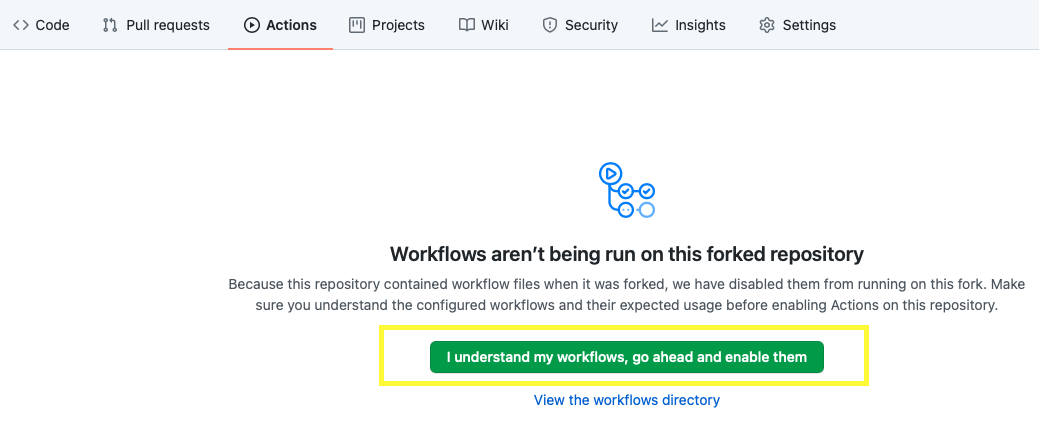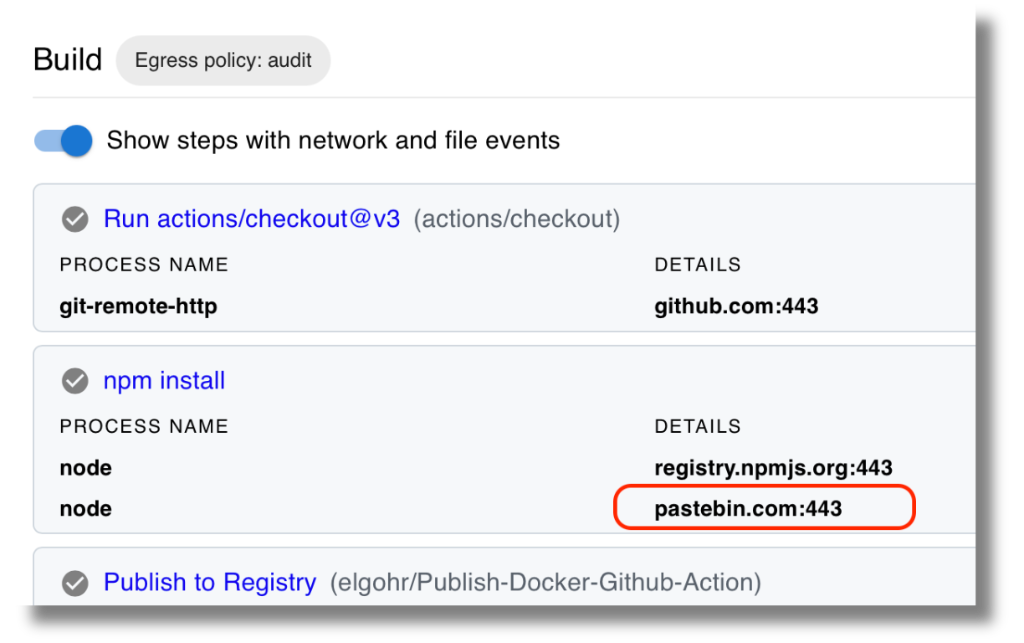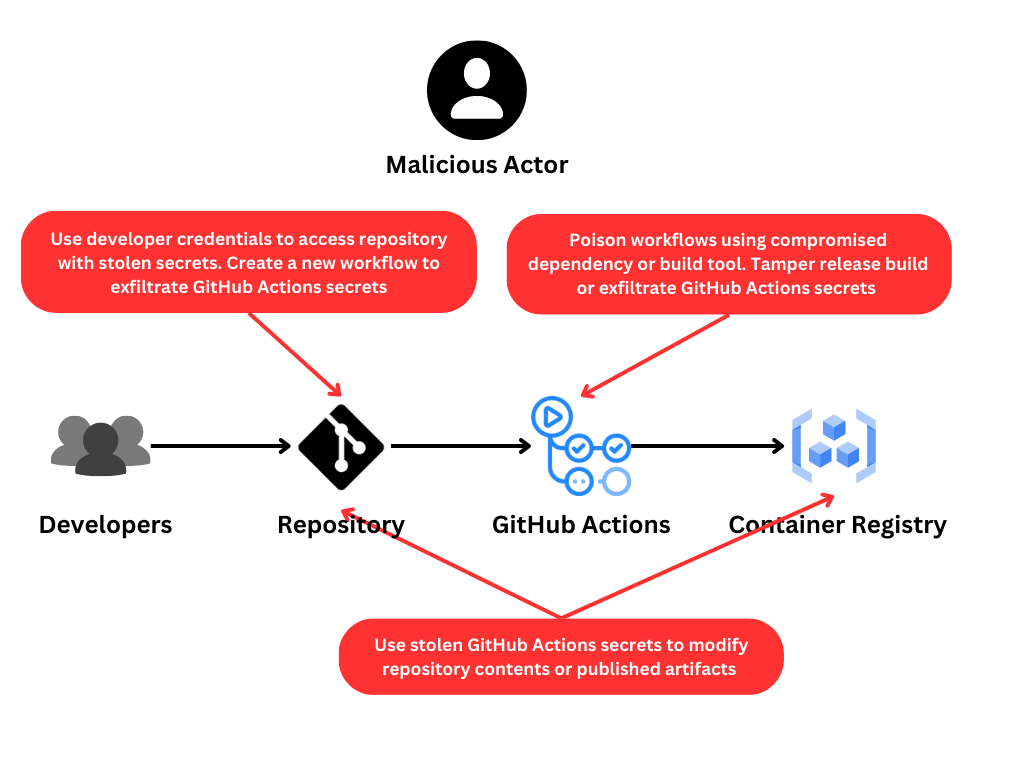GitHub Actions Goat by StepSecurity is an educational project that simulates common security attacks and vulnerabilities in a GitHub Actions CI/CD environment and shows how to defend against such attacks.
The importance of CI/CD Security has been underlined by guidance from the Cybersecurity & Infrastructure Security Agency (CISA) and the National Security Agency (NSA). As per their document Defending Continuous Integration/Continuous Delivery (CI/CD) Environments:
CI/CD environments have become attractive targets for malicious cyber actors (MCAs) aiming to introduce malicious code, steal intellectual property, or cause denial of service attacks against applications.
The increasing number of attacks on CI/CD environments, such as the infamous SolarWinds, Codecov, and ua-parser-js attacks, paints a vivid picture of this growing threat.
GitHub Actions Goat incorporates best practices from the CISA/ NSA guidance on CI/CD Security and the GitHub's Security Hardening for GitHub Actions guide to showcase how these threats can be mitigated in GitHub Actions Hosted-Runners and self-hosted Actions Runner Controller (ARC) environments.
Lets kick things off with a challenge designed to get your analytical gears turning:
- Take a look at the publish.yml GitHub Actions workflow.
- This workflow uses the Harden-Runner GitHub Action, which provides Security Observability and Runtime Enforcement for GitHub Actions workflows.
- Now, we present you with the puzzle. Check out these network events monitored during a workflow run of this workflow. Notice anything odd?
Why is there an outbound call to pastebin.com during the workflow run? Is this expected, or something more nefarious?
For the answer of the puzzle, check out the first hands-on tutorial on Filtering Egress Network Traffic from a GitHub Actions workflow run.
The CISA/ NSA guidance on CI/CD Security covers 3 main threat scenarios.
In a GitHub Actions CI/CD environment, someone with write access to a repository can create a new GitHub Actions workflow in a new branch. This workflow which will run in a new branch, which does not have branch protection rules and has not been reviewed by any other developer, can:
- Make use of the
GITHUB_TOKENto get write access to the repository contents or to the GitHub Container Registry (GHCR). - Access the GitHub Actions secrets in the repository and potentially exfiltrate them.
- Depending on how the OpenID Connect (OIDC) policies are setup to grant access to GitHub Actions workflows, this workflow can also get access to cloud accounts.
Real-world incidents: For examples of real-world incidents in which credentials have been exfiltrated from CI/CD pipelines, refer to Exfiltration of secrets from the CI/ CD pipeline
2. Supply chain compromise of an application library, tool, or container image in a CI/CD pipeline that leads to a poisoned DevSecOps environment
Unlike in the first scenario, where an attacker creates a new GitHub Actions workflow, in this scenario an existing GitHub Actions workflows is poisoined by compromise of a tool or library that is already being used in the workflow.
Similar to the above threats, if the GitHub Actions worklow is poisoined, an attacker can exfiltrate credentials.
In addition, if this is a deployment workflow, an attacker can also modify source code or build artifact during the build process. This is typically done by overwriting files on the file system during the build process. As a result, while no credentials are exfiltrated, the resulting artifact has been tampered with. This is a stealthy attack method as there is no log of these changes.
Real-world incidents: For examples of real-world incidents in which files have been tampered during the build and release process in CI/CD pipelines, refer to Tampering of source code or artifacts during build
GitHub Actions workflows can be used to approve pull requests and merge code into protected branches. As an example, lot of projects use these capabilities to auto-approve and merge Dependabot pull requests.
If a workflow is compromised it can potentially be used to push changes to the repository to modify existing source code.
Real-world incidents: For examples of real-world incidents in which
GITHUB_TOKENwas compromised, refer to Compromise of the GITHUB_TOKEN
To get started:
-
Create a fork of this repository.
-
Go to the
Actionstab in the fork. Click theI understand my workflows, go ahead and enable thembutton.
-
Click on a link in the
Countermeasurecolumn below and follow the hands-on tutorials.
GitHub Actions Goat not only demonstrates vulnerabilities but also presents solutions and references to best practices for each issue. In each scenario, we demonstrate how a particular threat can be mitigated.



